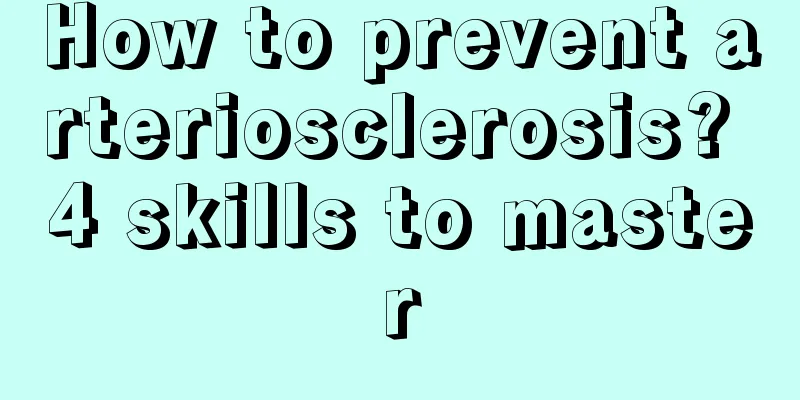Postoperative care and rehabilitation care for femoral neck fracture should be done well

|
Femoral neck fracture is most common among elderly people with osteoporosis. Generally, the elderly are weak. Once a femoral neck fracture occurs, it will easily cause many complications. Timely surgical treatment is required. Postoperative care is more important, and family members must provide comprehensive care. 1. Posture After the operation, the affected limb must be kept in abducted neutral position, and a soft pillow should be placed under the operated limb to keep the hip joint slightly flexed. You can place a soft pillow or triangular pad between your legs and wear anti-external rotation shoes. When moving or transporting a patient, the entire hip joint should be lifted, and not just the affected limb. The bedside table should be placed on the surgical side to prevent the patient from rolling to the opposite side and placing the surgical hip joint in an externally rotated and extended position. When lying on the healthy side, the two legs must be separated by a large soft pillow to prevent the hip joint from flexing more than 45°~60°. If you find that the affected limb is shortened, you should contact your doctor immediately and take X-rays to check whether it is dislocated. 2. After surgery, start early functional training under pain-free conditions , following the principles of gradual progression, passive plus active, isometric and isotonic exercises [2]. On the day after surgery, centripetal massage of the affected limb starting from the dorsum of the foot, active and passive flexion and extension exercises of the toes and ankle joints can be performed. On the second day after surgery, isometric contraction exercises of the hamstrings, quadriceps, gluteus maximus and gluteus medius can be performed to maintain muscle tension. The drainage tube was removed 2-3 days after surgery. Go for anti-external rotation shoes. You can then perform hip and knee flexion and extension exercises, hip extension and rotation exercises to train the hip joint range of motion. The flexion and extension exercises gradually transition from passive to active with assisted, and then to fully active exercises. Passive training is often assisted by a CPM device. The range of motion can be adjusted at any time and gradually increased. The movement speed is relatively slow and even, which is easily accepted by patients. Generally, the maximum motion angle at the beginning of CPM is set at 40°. At this time, the range of motion of the hip joint is 25°~45°, and then it will increase by 5°~10° every day. Each movement is maintained in a contracted state for 5s, and then relaxed for 5s, 20~30 times/group, lasting for 1h, 2 times/d, until about 1 week after surgery. Hip rotation exercises include extension and flexion positions. When practicing the hip flexion position, hold the bed support with both hands and swing the upper body slightly left and right. Be careful not to let the buttocks leave the bed. When the hip flexion position on the surgical side is unstable, avoid tilting the upper body toward the surgical side. In addition, upper limb muscle strength exercises should be strengthened so that crutches can be used better in the future. |
<<: Symptoms of femoral head fracture, these common manifestations
>>: The necrosis rate of femoral neck fracture still needs regular inspection and treatment
Recommend
The main cause of nasopharyngeal carcinoma
Among the diseases of the nasopharynx, nasopharyn...
The best treatment for skin cancer
Skin cancer is not a common disease and its incid...
Can I drink soy milk if my blood sugar is high? Patients with high blood sugar must pay attention
In recent years, with the gradual improvement of ...
Why does uterine cancer cause fever
In the late stage of endometrial cancer, fever ca...
The process of bean sprouts
When promoting healthy eating, growing bean sprou...
There is white stuff in the belly button
It is well known that the navel is a very importa...
The symptoms of liver cancer may be caused by the spread of the tumor
Most patients cannot detect the symptoms of liver...
Purple spots appear on the body
From the perspective of traditional Chinese medic...
What to pay attention to when buying an air conditioner
Air conditioning is an indispensable household ap...
Chest pain when sleeping at night
Although chest pain is a common phenomenon, most ...
Can endometrial cancer be cured? The 5-year survival rate can reach 90%
If endometrial cancer is treated promptly, the pa...
How to remove oil stains
There are many oil stains in our daily life. We w...
How to remove oil stains from clothes
Oil stains on clothes are a very frustrating prob...
How to care for nosebleeds caused by nasopharyngeal carcinoma
What is the color of nosebleed caused by nasophar...
What is mustard gas
What is mustard gas? Many people will have this q...









